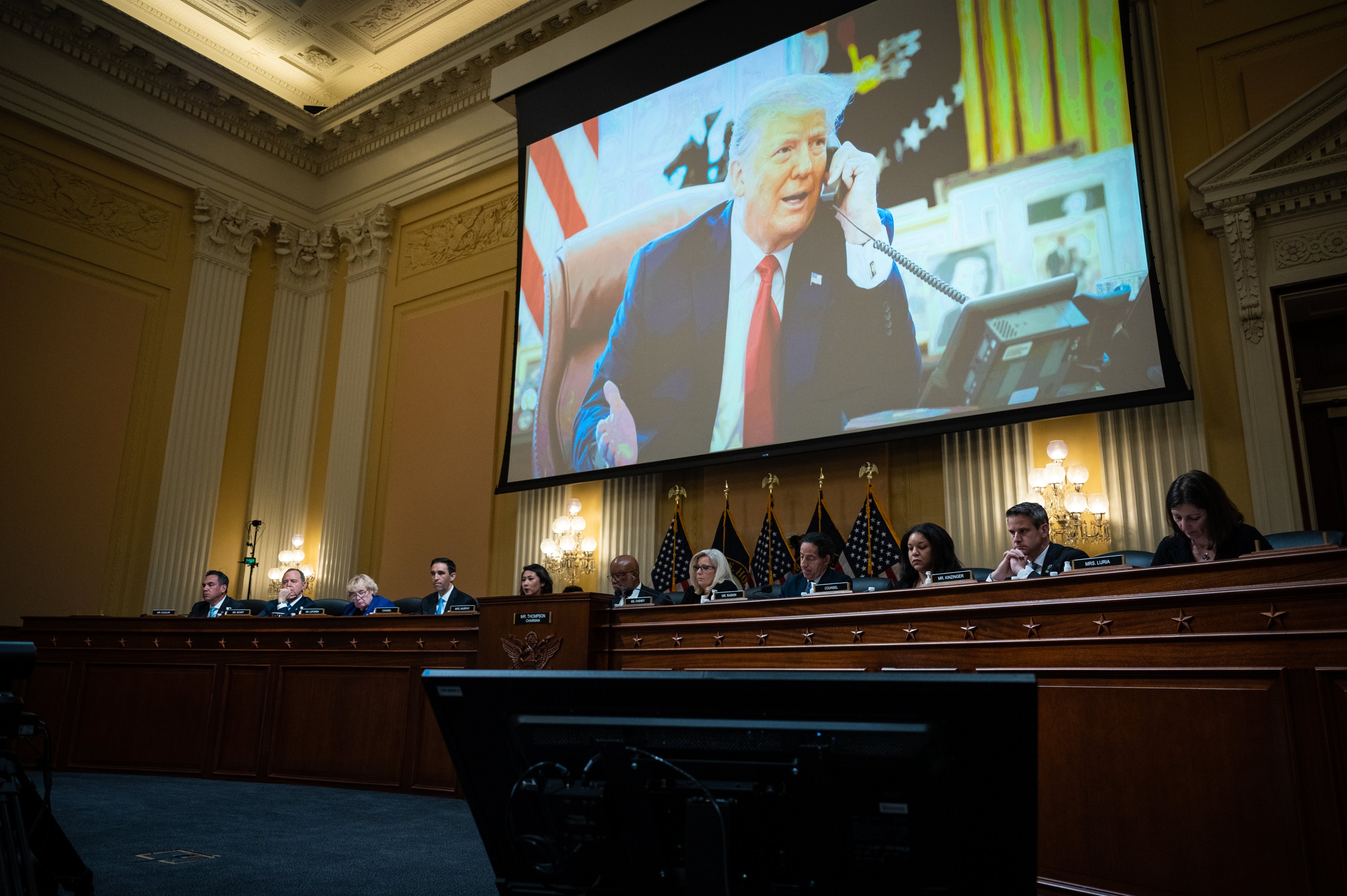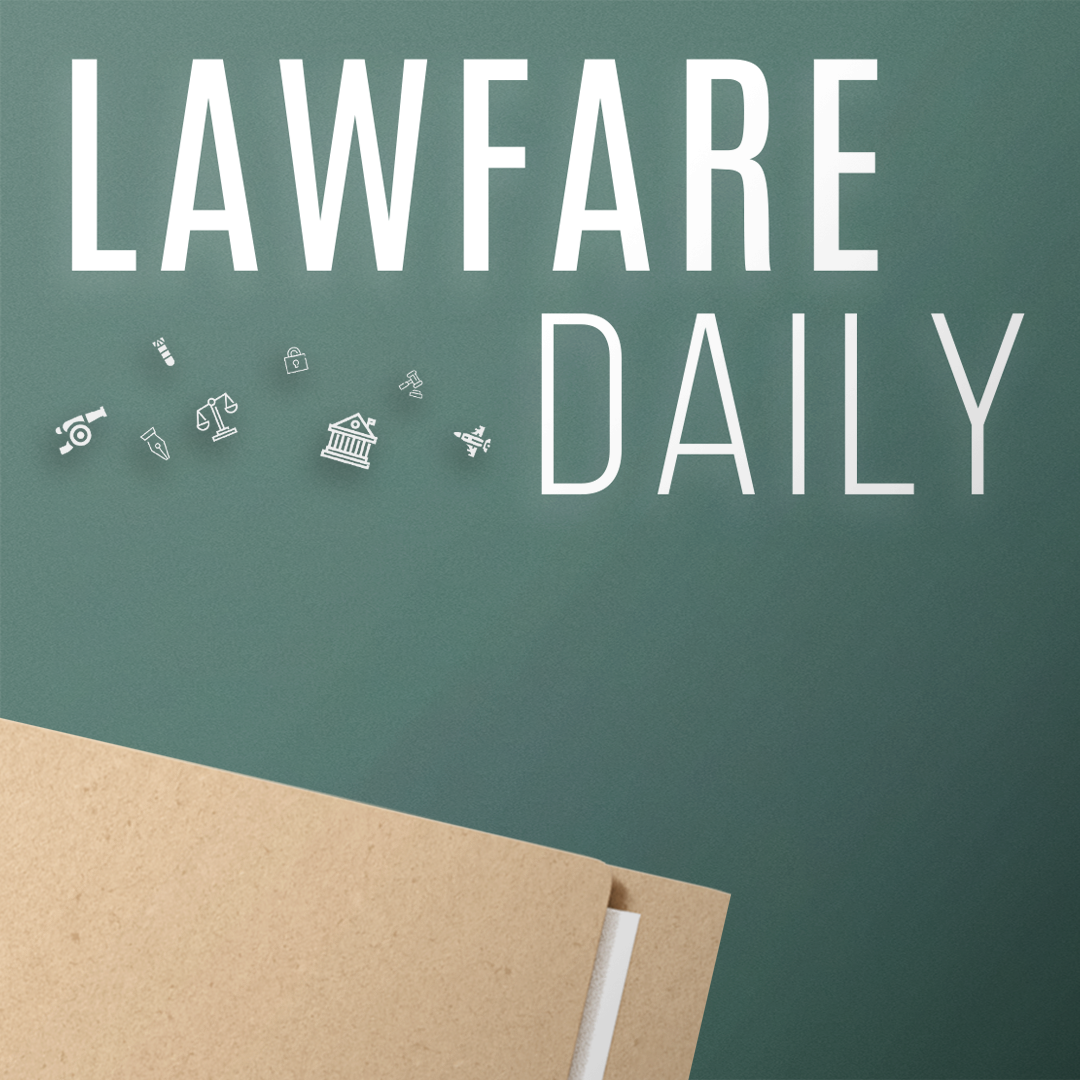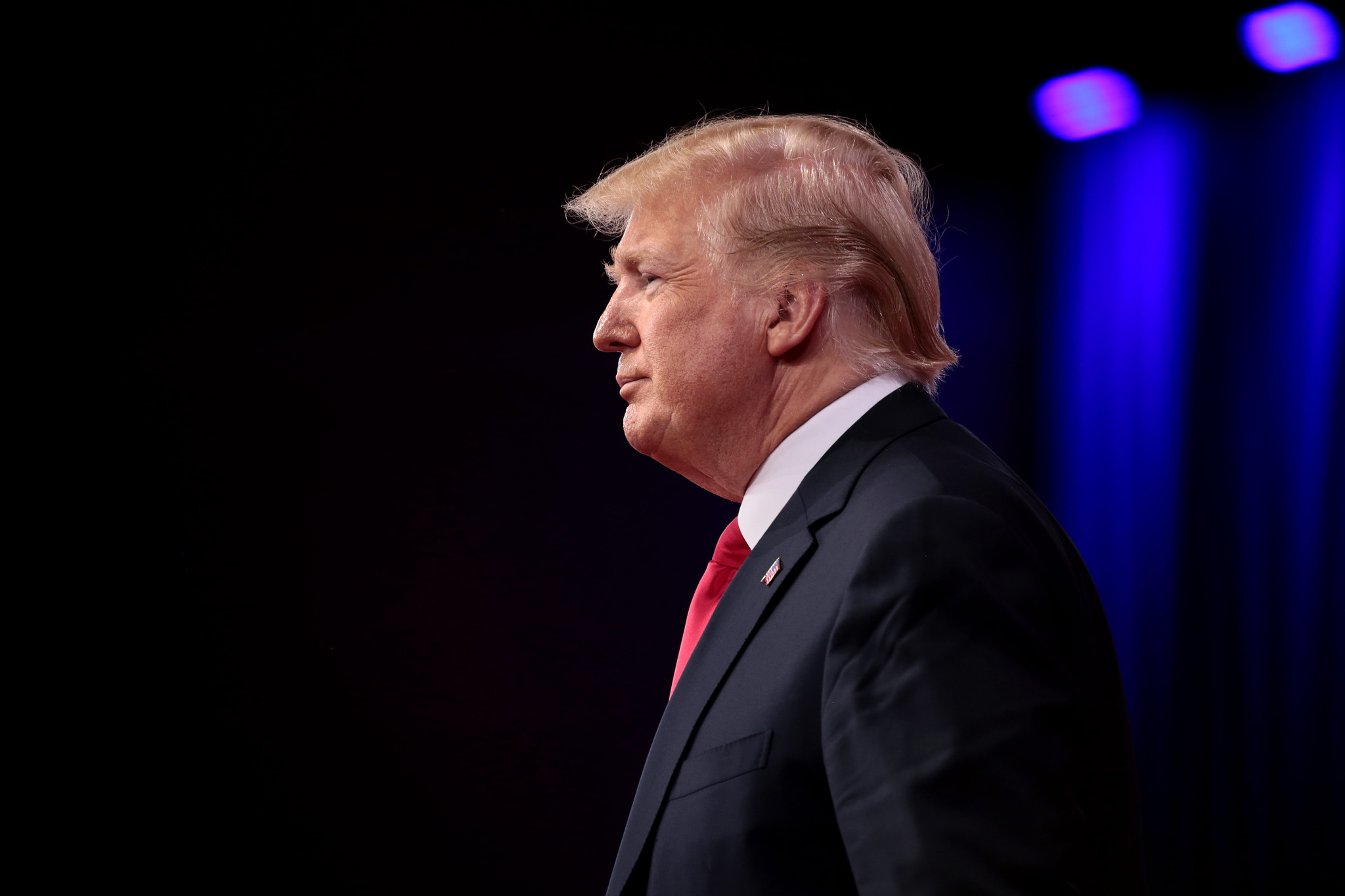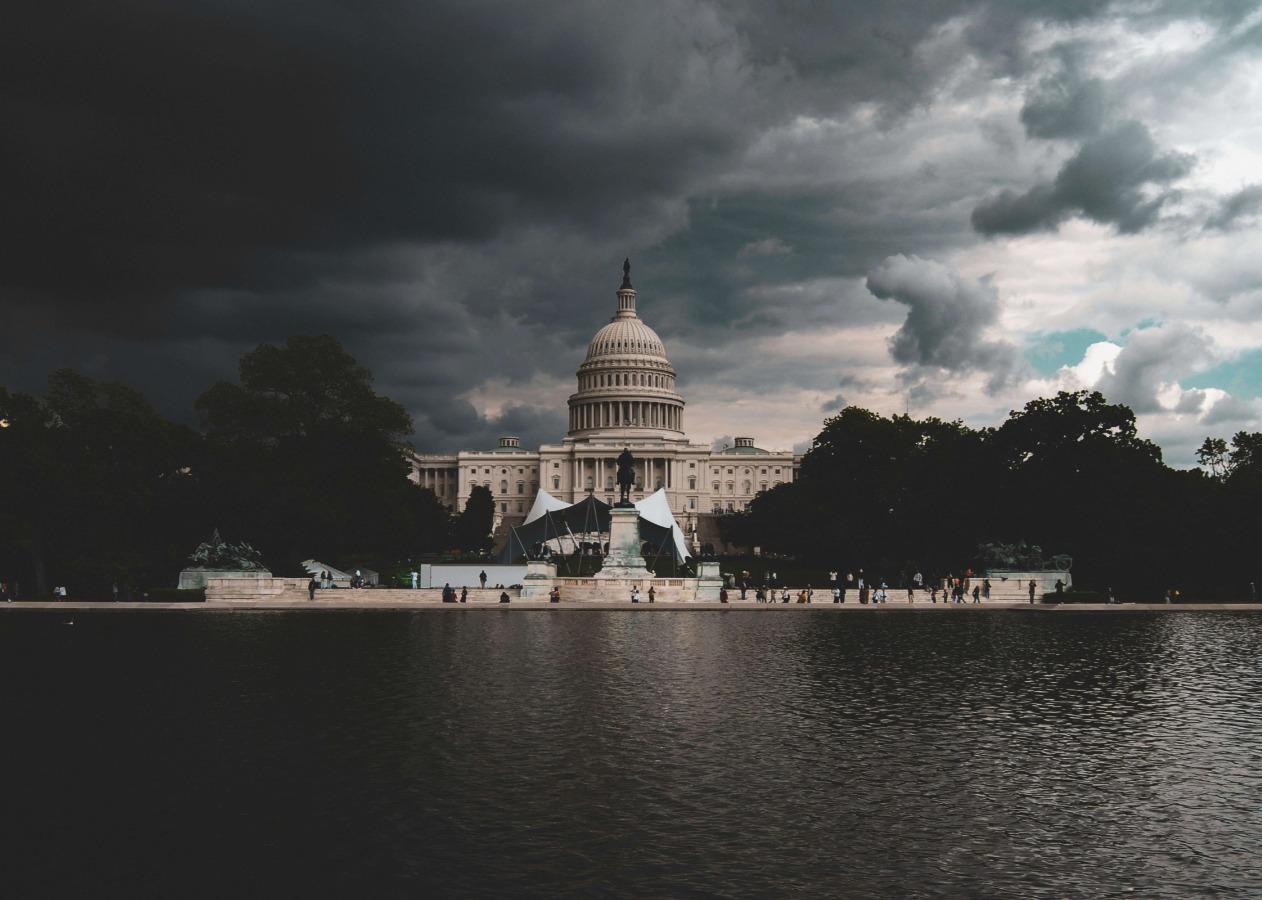The Search for Accountability: A Guide to Lawfare’s Jan. 6 Project
The story of Jan. 6’s aftermath—and all of Lawfare’s coverage of it—in one place.

Published by The Lawfare Institute
in Cooperation With

This page was last updated on May 12, 2023.
The story of Jan. 6’s aftermath—and all of Lawfare’s coverage of it—in one place.
The following is an interactive table of contents:
***
The slate of hearings convened by the Jan. 6 committee was the television event of summer 2022: a dramatic series that vividly reminded viewers of the chaos and violence of the attack on the Capitol. In fall 2022, the committee wrapped up its public hearings and compiled its work into a final report. Along with the Department of Justice’s criminal investigation into the insurrection, the committee’s work has received blockbuster media coverage as it continues to uncover new information about the attack.
But the investigations by the committee and the Justice Department are far from the only efforts to hold to account those who bear responsibility for the insurrection. There’s been an impeachment, multiple separate congressional investigations, and a swarm of civil lawsuits.
These many different threads can be difficult to untangle. That’s why we’re providing a detailed overview of Lawfare’s coverage of the various ways in which the government, individuals, and entities have responded to Jan. 6. We’ve been writing and podcasting about the insurrection since the dayit happenedand have closely followedthe twists and turns as the story of Jan. 6 continues to unfold—including taking a moment to talk about the big picture on the second anniversaryof the insurrection. Here, you can refresh your memory on aspects of the insurrection and the investigations into it that you may have forgotten. We’ll be updating this page regularly to include new information as Lawfare continues to cover the story.
The Second Impeachment of Donald Trump
In the days after the Jan. 6 Capitol attack, people in and out of government called for Trump to be strippedof the powers and duties of the presidency, either by impeachment or by invocation of the 25th Amendment. Amid these calls, some argued that pragmatic considerationsshould guide the decision on whether to impeach the president a second time. Others arguedthat while the move would be appropriate, it would draw the Senate’s attention away from confirming the new president’s national security team. And given that only a few days remained before President Joe Biden’s inauguration, scholars debatedwhether Trump, as a former president, was even eligible to be impeached and convicted.
On Jan. 13, 2021, for the second time in his presidency, Trump was impeached by the House of Representatives, this time for incitement to insurrection. Following the House vote, nine impeachment managers filed a briefarguing that Trump was responsible for the Capitol attack and calledon the 45th president to testify in his Senate trial. Trump’s legal team submitted response briefs disputingthe allegations that he had incited the riot and calling the trial unconstitutional.
On the eve of trial, it was still unclearwhether the Senate would consider the House managers’ charge narrowly or in the broader context of Trump’s aberrant presidency. Ultimately, the triallastedforfivedays, concluding on Feb. 13, 2021.
Lawfarededicated an episode of The Aftermath, our narrative podcast series on the response to the Jan. 6 insurrection, to exploring the second impeachment—the politics, the legal complexities, and the story it told.
Early reactions to Jan. 6 also came in the form of civil lawsuits against Donald Trump and others. A group of plaintiffs that included members of Congress brought suit against Trump, Rudy Giuliani, Rep. Mo Brooks (R-Ala.), and the Oath Keepers in February 2021. Litigation in the case, Thompson, et al. v. Trump (now consolidated as Blassingame v. Trump), continued for months. Two key issueswere whether a suit against Trump was barred by presidential immunity, which prohibits civil actions against sitting presidents, and whether the defendants’ actions constituted First Amendment-protected activity. Both issueswere raised at oral argumenton Jan. 10, 2022. In a key ruling out of the U.S. District Court for the District of Columbia on Feb. 18, 2022, the suit survivedTrump’s motion to dismiss. Trump appealed the decision to the U.S. Court of Appeals for the D.C. Circuit. After listening to oral argumentin that case on Dec. 7, 2022, our analyst assessedthat the court appeared poisedto make a narrow ruling against civil immunity for Trump. In March, the Justice Department filed an amicus briefin Thompson, et al. v. Trump in which it argued that presidential immunity does not protect Trumpfrom civil suit over his actions on Jan. 6. Blassingame v. Trump is currently in the U.S. Court of Appeals for the D.C. Circuit. A hearing has not been scheduled at the time of this writing.
In a separate civil action, a group of Capitol Police officers suedTrump, Roger Stone, the Proud Boys, and several other Trump allies and organizations, claiming that they conspired to violently prevent the transition of power and that they committed “bias-motivated acts of terrorism.” That litigation is ongoing.
The House Select Committee
Just days after Jan. 6, Congress began to respond. As committees in the House and Senate launched a number of smaller, separate investigations focusing on discrete issues (for more on this, see the Congressional Investigations and Responses section below), there was talk of a broader investigation, which raised questionsof just what that would look like. In May 2021, the House of Representatives passed a bill to create a 9/11-style commission, with the support of all Democrats and 35 Republicans, but it failed to pass in the Senate.
After the idea for a national commission collapsed, the House of Representatives in July 2021 created the Select Committeeto Investigate the January 6th Attack on the U.S. Capitol. But the partisan divide undergirding the creation of the committee engendered questionsearly on about what the committee could achieve.
Lawfare’s fifth episode of The Aftermath, our narrative podcast series on the response to the Jan. 6 insurrection, tells the story behind the Jan. 6 select committee’s creation.
Legal Challenges and the Jan. 6 Select Committee
The select committee held its first hearingat the end of July 2021, during which four law enforcement officers who had protected the Capitol on Jan. 6 testified. But it stayed relatively quiet—at least publicly—for months after that first hearing, leading manyto wonderwhat was going onbehind the scenes.
It soon became clear that the committee’s silence did not signal inaction. Its efforts to collect informationfor its investigation generated civil lawsuits challenging the committee’s authority and pushing back against its activities. (Relatedly, in light of reports that the select committee might attempt to secure testimony from fellow members of Congress, Lawfareanalyzedwhether congressional committees can subpoena members of Congress.) Former President Trump filed suit in Trump v. Thompsonto challenge the committee’s subpoena to the National Archives and Records Administration (NARA), arguingthat the documents the committee sought were shielded by executive privilege, which allowsthe president to withhold from disclosure certain kinds of documents. Trump lost in the D.C. District Court and immediately appealed. But he lostagain at the D.C. Circuit, and was denied a key motionby the Supreme Court. Soon after, NARA began producing documents to the committee.
When the committee later issued a subpoenato Trump on Oct. 21, 2022, seeking records and testimony, Trump sued again. The underlying legal issueswere complex, but ultimately left unlitigated; the committee withdrew the subpoena on Dec. 29, 2022, as it wrapped up its investigation.
Trump was not the only person to challenge the select committee’s subpoena power. Several of his allies, including former advisers Steve Bannon and Peter Navarro, former Chief of Staff Mark Meadows, former Deputy Chief of Staff for Communications Dan Scavino, Arizona state senator Kelli Ward, and former lawyer John Eastman, also refused to comply with the select committee’s subpoenas—leading to even more civil lawsuits and, in some cases, to criminal referrals.
Bannon was the first to expressly defy the Jan. 6 committee’s subpoena for documents and testimony, arguing that the information was subject to executive and other privileges and therefore could not be disclosed. This first challenge to the committee’s authority raised immediate questions about whether and how the committee could enforceits subpoenas. The answer was not straightforward, particularly after a key question—whether executive privilege applied—was complicatedfurther by two developments: Biden’s decision to waive executive privilege and Trump’s lawsuit (Trump v. Thompson, discussed above) claiming that he had the authority to uphold executive privilege over information originating from his own presidency. The committee ultimately chose to seek enforcement by preparing a contemptreport outlining the committee’s efforts and Bannon’s refusal, which formed the basis of the House’s referral of Bannon to the U.S. Attorney’s Office for the District of Columbia for criminal prosecution. Several weeks passed without word from the Justice Department, raising concerns that it would decline to prosecute, which would have undermined the committee’s work by failing to enforce its subpoenas. Lawfare analysts, though, arguedthat the delay was reasonable given the complexity of the underlying legal issues.
On Nov. 12, 2021, Bannon was indicted. His legal defense again relied on his claim that he could not produce the materials the committee sought because they were covered by executive privilege. He further argued that he could not be held in contempt because even if executive privilege did not apply, he had relied on lawyerswho had advised him to the contrary. But Bannon did not prevail: On July 22, 2022, he was convicted of two counts of contempt of Congress related to his stonewalling of the Jan. 6 select committee. On Oct. 17, 2022, the Justice Department recommendeda six-month sentence and a $200,000 fine; Bannon requestedprobation. On Oct. 21, 2022, Bannon was sentenced to four months in prison.
After initially engaging in negotiations with the committee, Trump’s former chief of staff, Mark Meadows, suddenly ceased his cooperation, raising questionsabout the pace at which the committee should seek Meadows’s testimony. On Dec. 14, 2021, the House voted to refer Meadows to the Justice Department on the grounds that he was in contempt of Congress.
Trump adviser Peter Navarro and Deputy Chief of Staff for Communications Dan Scavino had also refused to respond to subpoenas, and in March 2022, the House voted to refer them to the Justice Department for contempt prosecutions. Several months later, on June 3, the department informed the committee that it would indict Navarro but would not bring charges against Scavino or Meadows, and provided its legal rationaleto explain the divergent outcomes.
The House’s referrals to the Justice Department were not the only legal proceedings to result from individuals’ refusals to comply with the committee’s subpoenas: Both Mark Meadows and John Eastman brought suits against the committee in federal court.
Meadows filed suit on Dec. 8, 2021, asking the court to invalidate certain subpoenas from the select committee. On July 18, 2022, after the presiding federal judge in Meadows’s case solicited the Justice Department’s view on Meadows’s entitlement to executive privilege or testimonial immunity, the department releaseda Statement of Interest in which it said that Meadows retains a form of lessened immunity—and that this immunity can be overcome if legislators sufficiently demonstrate their need for the information and their inability to get it elsewhere.
Eastman was personally subpoenaed in November 2021 but declined to produce documents and asserted his Fifth Amendment rights. The committee then subpoenaed his employer, which was a custodian of Eastman’s communications. In response, Eastman filed suit in January 2022, seeking a preliminary injunction to prevent his employer from complying with the committee’s subpoena, arguing that the materials were privileged. The committee argued in response that privilege would not apply given evidence that “Trump and others may have engaged in criminal and/or fraudulent acts.” A court later agreed, holding that Trump had likely been using Eastman’s legal services in furtherance of a crime and thus the crime-fraud exception defeated any claims of privilege. Eastman was later recommended for disbarmentby the California state bar in connection with these activities.
The discussion of Trump’s potential crimes, though occurring in the narrow context of adjudicating privilege claims over subpoenaed documents, engendered debate about whether the Justice Department would be compelled to investigateor prosecute Trump on the basis of the evidence the committee had offered and the judge’s findings.
The Select Committee’s Summer 2022 Hearings
Nearly a year passed between the committee’s first public hearing and the next one, which was held on June 9, 2022. In a series of eight hearingsspanning June and July 2022, and a final meeting that December, the committee delivered explosive new information arising from documents and depositions with White House staff and other Trump advisers:
- The firstof these hearings centered on the Capitol riot itself, which the committee described as the result of “a sprawling, multi-step conspiracy aimed at overturning the presidential election.”
- The secondhearing focused on Trump’s efforts, from the eve of the 2020 election through the months that followed, to overturn an election that he knew he lost.
- The thirdhearing, held on June 16, concentrated on Trump’s and his lawyer John Eastman’s attemptsto pressure Vice President Mike Pence to overturn the election by refusing to certify the 2020 election; the hearing featured testimony from the vice president’s advisers.
- In the fourthhearing, the committee turned its attention to Trump’s efforts to pressure state election officials to invalidate election results in their states.
- The fifthhearing focused on Trump’s campaign to initiate Justice Department action on his claims of election fraud, including through the replacement of noncompliant officials.
- In a blockbuster sixthhearing, the committee heard testimony from Cassidy Hutchinson, former aide to White House Chief of Staff Mark Meadows, who detailed the actions of Trump and his White House staff on Jan. 6 itself—includingTrump’s plan to go to the Capitol after his speech at the Ellipse and his knowledge that some members of the crowd were armed.
- The seventhhearing pieced together a Dec. 18 showdown, during which Trump’s external advisers encouraged him to direct the secretary of defense to seize voting machines while White House staff pushed back. It also providedmore evidence on the role of extremist groups in planning the assault on the Capitol.
- In the eighthhearing, the committee described in detail what Trump had been doing—and not doing—during the hours in which his supporters stormed the Capitol.
- And in its final meetingon Dec. 22, 2022, the committee summarized its workand voted to make criminal referrals to the Justice Department of several individuals, including Donald Trump.
Collectively, the hearings provided evidence to support what the committee called a “seven-part plan overseen by President Donald Trump to overturn the 2020 election.” Lawfareorganizedall of the information presented in the June and July hearings by category to show how the committee defended each of its seven points.
Legal experts debated whether the committee’s evidence supported claims that Trump could be held criminally liablefor the attack on the Capitol—and on this point, some even changed their mindsas testimony exposed new informationabout Trump’s conduct in the days surrounding the insurrection. Others reflectedon whether evidence revealed by the committee suggests that Trump lied to Congress during his second impeachment proceedings.
Evaluating the Committee
Congressional experts noted in Lawfarethat the select committee’s work has been characterized, among other things, by its innovative use of public hearings to communicate with the public. They arguedthat Congress can improve the effectiveness of future hearings by adopting some of its strategies but also cautioned that the committee’s unique composition and purpose means that the model has some limits.
Analysts also consideredhow the select committee defined its mission in finding accountability for Jan. 6, especially vis-a-vis the criminal investigations the Justice Departmentwas conducting in parallel.
The Committee’s Final Report
As the clock ticked down to the end of the 117th Congress—and thus the end of the Jan. 6 select committee—the public eagerly awaited the committee’s long-promised final report. The executive summarywas finally released on Dec. 19, 2022. At 154 pages, the executive summary conveyed a remarkable wealth of information, including in its footnotes. But it also omitted some crucial information, in particular with regard to intelligence and law enforcement failures.
A few days later, the committee began releasingtranscripts of witness interviews it had gathered over the course of its 18-month investigation. Lawfare organized and compiledthem alongside other committee documentson our Jan. 6 Project pageto ensure that they would remain available after the committee was disbanded and its website housing the documents taken down.
Finally, on Dec. 22, 2022, the committee released its full, 845-page final report. Divided into eight chapters, a series of recommendations, and four appendices, the report gives a comprehensive accountof the insurrection on Jan. 6 and its lead-up. It tells the storyof efforts to perpetuate the lie that Trump had won the election, his campaign’s attempts to persuade state officials to reverse the outcome of elections in their states, the so-called fake electors scheme, Trump’s pressuring the Justice Department to take actions to overturn the election and the near-coup of its leadership, the plan to convince Pence to unilaterally reject electoral votes, Trump’s summoning a violent mob to D.C., and his refusal to call off that mob after the attack on the Capitol had begun. It also analyzes in detail the attack itself, relying heavily on materials derived from the Justice Department’s more than 900 criminal prosecutionsof Jan. 6 rioters. The report then conveys the committee’s legislative recommendations, including one relating to reforming the Electoral Count Act that was already close to completion by the time of release. It also makes referrals to the Justice Department for criminal prosecution of Trump and some of his advisers, and to the House Ethics Committee for investigation of four Republican members of Congress. Finally, in appendices, it examines how government agencies and the National Guard prepared for and responded to the Jan. 6 attack, how lies that Trump had won the election bolstered fundraising for his campaign and the Republican National Committee, and how malign foreign actors like Russia attempted to interfere with the election.
There is, in other words, an awful lot of information in the committee’s final report. When paired with the underlying cited materials the committee has released to the public, though, a deeper readreveals even more.
In the weeks after the committee’s release of its final report, committee staffers began to speak publicly about details and information that was not heavily emphasized, or even included, in the report. Their writing and interviews put together missing pieces of the puzzle that was the committee’s final report, revealing key pointsabout what it did and did not include. On Lawfare, committee investigative counsel Jacob Glick discussed what the investigation showed him about the forces that led to Jan. 6, how he understands the threat still posed by extremism, and what it was like interviewing Twitter whistleblowers and members of far-right groups who stormed the Capitol. Also featured was investigative analyst Dean Jackson, who provided further details left out of the final reportabout how social media enabled the insurrection.
Other Congressional Investigations and Responses
Besides the second impeachment and the select committee—which were criticized as Democrat-led efforts to attack Trump for partisan gain—what else has Congress done in response to Jan. 6? Though lesser known, there have been a lot of important accomplishmentsduring a brief period in which Democrats and Republicans worked together, which Lawfareexplored in the fourth episode of our narrative podcast series The Aftermath.
Just days after the attack, both the House and the Senate conducted bipartisan investigations and ethics inquiriesin an attempt to understand what had happened. On Jan. 15, the House of Representatives commissioned a review from Gen. Russel Honoré to investigate the security failures of Jan. 6 and make recommendations to address continuing security vulnerabilities of the Capitol. Honoré’s reportwas released in March 2021.
Both houses of Congress also held public hearings in the weeks after the attack, focusing on the physical security of the Capitol complex and the failure to collect and disseminate adequate intelligence in preparation for the violent protests that occurred on Jan. 6. In the Senate, most of the investigation was led by a joint effort between the Homeland Security and Governmental Affairs Committee and the Rules and Administration Committee. The committees conducted two jointhearings, in which they questionedmultiple security officials, including Robert Contee III, acting chief of the D.C. Metropolitan Police Department; Steven Sund, former chief of Capitol Police; Michael Stenger, former Senate sergeant-at-arms; Jill Sanborn, assistant director of the FBI’s counterterrorism division; and others.
On March 2, 2021, the Senate Judiciary Committee also heardtestimonyfrom FBI Director Christopher Wray to examine the FBI’s actions in the weeks before the attack and the broader threat of domestic terrorism. In this hearing—despite the FBI’s obvious institutional failures—senators neglected topress Wray about his claims that the FBI had “performed admirably” in monitoring and combatting domestic terrorism in the lead-up to Jan. 6. In the House, the investigation was spread among more committees, including the House Administration Committee, the Oversight Committee, and the Appropriations Committee.
The early hearings revealed failures on the part of multiple federal agenciesand individuals to adequately prepare for and address the Jan. 6 attack on the Capitol. Most notably, there were major failures in intelligence collection and dissemination, as well as institutional incompetencies that prevented the deployment of the National Guard to the besieged U.S. Capitol in a timely and effective manner.
Congress’s work continuedfor many months to come. In April 2021, the House Administration Committee held an oversight hearingrelating to the U.S. Capitol Police’s (USCP’s) preparations for and response to the Jan. 6 attack. In May 2021, the Senate Appropriations Committee helda hearingon domestic violent extremism, which would later also be the subject of a national strategypromulgated by the Biden administration in June 2021 and the topic of a Senate Judiciary Committee hearingin January 2022. (Lawfareanalysts also discussedhow domestic terrorism was being driven by a continuing threat of white extremism.)
The first report to come out of Congressabout the Jan. 6 attack on the Capitol was issued by the Senate Rules and Administration and the Homeland Security and Governmental Affairs committees in June 2021—six months after the attack. The report detailed the “critical breakdowns”in intelligence collection and sharing between federal agencies; “security, planning, and response failures” of the USCP and the Capitol Police Board; and the Department of Defense’s apparent hesitation to deploy the National Guard. Legal and congressional experts observed that while the report thoroughly outlined what went wrongbefore and on Jan. 6, it did not discuss in depthwhythese failures occurred. (Lawfare contributors, however, evaluatedwhether Jan. 6 represented an intelligence failure, a police failure, or both, and also consideredhow pervasive problems in policing may have played a role.)
In October 2021, the Senate Judiciary Committee released a “terrifying” staff reportdetailing former President Trump’s efforts to pressure the Justice Department to aid him in his attempt to overturn the election.
The congressional investigations resulted in more than just hearings and reports, though. Congress, the USCP, and the Justice Department took actions to address the problems that the investigations had uncovered and to implement their policy recommendations. For example, the USCP developed a new operational, standardized plan to address large-scale events—including protests—at the Capitol. Congress passed emergency funding legislation to bolster USCP staffing, training, and equipment requirements. And the Justice Department is reportedly workingto improve intelligence collection and sharing to better confront threats of domestic terrorism.
Congress also passed legislation in response to Jan. 6. To address institutional incompetencies that prevented the timely deployment of the National Guard to the Capitol on Jan. 6, Congress passed legislation to allow for the USCP chief to request assistance from the National Guard in the event of an emergency without the prior approval of the Capitol Police Board. And in an effort to resolve the underlying controversy over certifying Biden’s election, Congress began workingin earnest to reformthe Electoral Count Act, which sets forth the processby which popular votes for president are translated into electoral votes. A bipartisan group of senators put forward a long-negotiated legislative proposalto implement changes to the lawin the summer of 2022. On Dec. 29, 2022, President Biden signed the Electoral Count Reform Actinto law.
Agency Investigations
Several other government entities conducted their own investigations into the Jan. 6 attack. On Nov. 16, 2021, the Department of Defense inspector general released a reportexamining that department’s preparation and response, ultimately concludingthat it had acted appropriately and, contrary to some critics’ views, had not improperly delayed deploying the National Guard.
The Department of Homeland Security’s inspector general conducted an investigation into its intelligence divisions’ failure to share information about known violent threats in advance of Jan. 6. The report, which was released on March 4, 2022, found that in some cases, the divisions’ analysts had collected open-source information about threats but had not issued reports; in other cases, they had collected threat information and transmitted it by email to local law enforcement partners in D.C. but had not disseminated them widely.
The USCP inspector general’s office issued six separate reports over the course of its investigation. The firstfocused on operational planning and intelligence, the secondand thirdon the Civil Disturbance Unit and intelligence, the fourthand fifthon the Containment Emergency Response Team and First Responders Unit, and the sixthon the Hazardous Incident Response Division and Canine Unit.
And the Government Accountability Office issued a reportin March 2022 outlining its own review of the USCP’s preparation and performance and recommending changes to prevent future attacks.
Criminal Investigations and Prosecutions
After the attack on the Capitol, consequences were top of mind—who should be held accountable for what had happened, and how?
The violence and property damage made federal criminal chargesagainst the rioters themselves seem almost inevitable—and many rioters were indeed charged within the first few monthsof the attack. But as prosecutors got to work investigating, it soon became clear that prosecuting the attack was far from straightforward. How would investigators work through the mountain of digital evidence relating to Jan. 6, including from open-source intelligence? What kinds of charges could be brought against the rioters, given that their conduct ranged from simply standing in a crowd to violently attacking police officers? Could a criminal statuteprohibiting obstruction of an official proceeding apply to the rioters, and would judges allowprosecutors to use it on these unprecedented facts? Could some of the rioters’ conduct warrant charges that rose to the level of felony murderor evenseditiousconspiracy? Or might some of these potential charges be too legally or politically risky? Should others be held criminally responsible for instigating the attack, even if they were not physically present at the Capitol? Can, and should, the Justice Department indict Trump?
Many of the Justice Department’s early prosecutions targeted relatively low-level crimes, including by securing plea deals—a decision that some criticized as resulting in sentences that were too lenient. But by late fall 2021, the hundreds of criminal indictmentsalso included serious felonies, such as conspiracy casesagainst organized groups. Some of the most serious charges did not come until about a year after the attack, when the Justice Department indicted several defendantson charges of seditious conspiracy. Among those were leaders of the Oath Keepersand the Proud Boys, leading some observers to wonder what impact the prosecutions would have on domestic extremist groups.
As the prosecutions proceeded, new questions arose. Defendants askedfor their cases to be moved to new jurisdictions, arguing that D.C. juries would be biased. Judges began handing down sentences, and some raised questionsabout whether the varying outcomes reflected judges’ political colors.
More broadly, Lawfare contributors debated whether the Justice Department’s strategyand messagingin pursuing criminal caseswas meetingthe moment, and how observers should evaluatethe department’s progress.
The highest-profile trials began at the end of 2022. Starting in October, LawfareSenior Editor Roger Parloff attended and live-tweeted all but two hours of the 29-day trial of five senior members of the Oath Keepers. The case presented the most complicated charges to date—including seditious conspiracy—and defendants raised an innovative defense strategy. The jury ultimately returned a splintered verdict, which Parloff analyzedalongside his main takeaways from the trial and its implications for other Jan. 6 prosecutions.
In January 2023, the trial of five top Proud Boys members began. They were indicted on 10 counts, again including seditious conspiracy. Parloff was in that courtroom, too, covering minute-by-minute developments in his Proud Boys Trial Diaryand providing regulardispatchesto share his analysis. On May 4, the jury reached averdictin the case, finding four of the five defendants guilty of seditious conspiracy, among various other charges.
The winter also brought important legal developments in other cases, many with broad implications for a great number of Jan. 6 defendants. In particular, a challengeto the felony charge of corrupt obstruction of an official proceeding, 18 U.S.C. § 1512(c)(2), threatened the prosecutions of hundreds of Jan. 6 defendants, including dozens who had already pleaded guilty to that charge. The D.C. Circuitheard oral argumentin that case in December 2022. On April 7, a panel for the appeals court issued a 2-1 decision, narrowly upholdingthe felony charge against Jan. 6 rioters. Separately, a judge denied one Jan. 6 defendant’s effort to preclude the government’s use of geolocation data, a powerful toolthat prosecutors have used to establish that defendants were physically present during the attack on the Capitol.
Fulton County Investigation
The Justice Department is not the only entity conducting a criminal investigation of Jan. 6. A special purpose grand jury in Fulton County, Georgia, is investigating possible criminal interference in the state’s 2020 elections. Beginning in July 2022, it issuedsubpoenas to several prominent individuals, including many close Trump allies: Rudy Giuliani, John Eastman, Mark Meadows, Michael Flynn, Sen. Lindsey Graham (R-S.C.), former Speaker Newt Gingrich, Georgia Governor Brian Kemp, and former Trump campaign lawyer Jenna Ellis. Giuliani, Meadows, Flynn, Graham, Gingrich, Eastman, and Ellisall raised legal defenses in an effort to resist the subpoenas. Of those, Sen. Graham’s challenge produced the most litigation, including an appeal to the 11th Circuitand a stay petition to the Supreme Court, the latter of which Justice Clarence Thomas ultimately granted. The Supreme Court later declined to block Graham’s testimony; he appeared before the special purpose grand jury to testify on Nov. 22, 2022.
The Fulton County investigation is operating under Georgia state law, which involves several unique practices that greatly impact the proceedings. For instance, to conduct the investigation, District Attorney Fani Willis convened what’s called a special purpose grand jury—a jury that sits for longer than a regular grand jury and is typically deployed when the case at issue is particularly complex. The special purpose grand jury, however, does not have the power to indict; rather, it issues to the district attorney a report compiling its findings and making recommendations. The Fulton County special purpose grand jury did so in early January 2023, after an eight-month investigation.
Georgia law provides that there are certain circumstancesunder which the district attorney mustmake the report public. A court heard oral argumentson Jan. 24. Lawfaretrial correspondent Anna Bower attended and provided minute-by-minute coverageof the proceedings. On Feb. 16, Judge Robert McBurney of the Superior Court of Fulton County orderedthat most of the special grand jury’s final report not be made public until Willis completes her investigation into interference in the 2020 election in Georgia. McBurney did, however, order that the report’s introduction, conclusion, and Section VII be published. Lawfare summarizedthe released portions and discussed potential implications. One month later, Trump submitted a motion to quash the final report. In April, Willis sent a letterto the county sheriff in which she wrote that she would be announcing charging decisions resulting from the special grand jury’s investigation as soon as July 11, 2023, indicating a timeline for a potential indictment of former President Trump in Fulton County.
Also notably, on May 5, an ex parte filingin the Fulton County District Superior Court revealed that the majority of fake electors who committed to vote on behalf of Trump took immunity deals and sat for interviews before the district attorney’s office.
Special Counsel Appointed to Investigate Trump
Another major development in Jan. 6-related criminal prosecutions took place on Nov. 18, 2022, when Attorney General Merrick Garland announced the appointment of a special counsel, Jack Smith, to investigate “whether any person or entity violated the law in connection with efforts to interfere with the lawful transfer of power following the 2020 presidential election or the certification of the Electoral College vote.” (Smith was also appointed to continue the Justice Department investigation of classified and other government documents retrievedfrom Trump’s Mar-a-Lago home—a topic Lawfarehas also covered extensively.) Though some analysts arguedthat such a move was not strictly necessary, Garland explained that he had made the decision to turn the investigations over to a special counsel after Trump announced his intention to run for president again in 2024.
In February, Special Counsel Smith issued a subpoena to former Vice President Pence. Pence announced that he would not be cooperating with the subpoena, arguing that he is immune from questioning under the Speech or Debate Clause of the Constitution. Lawfare contributors considered the meritsof Pence’s argument.
Meanwhile, the U.S. Court of Appeals for the District of Columbia Circuit held oral argumentsregarding the Justice Department’s attempt to obtain Rep. Scott Perry’s (R-Pa.) phone records. The department claims that Perry played a critical rolein Trump’s attempt to overturn the 2020 election.
Disqualification
To what extent were government officials—perhaps even Trump—involved in the insurrection? In the aftermath of the riot, many people wondered whether such individuals should be somehow forbiddenfrom running for elected office again.
As it turns out, the 14th Amendment to the U.S. Constitution, which was passed just after the Civil War, contains a provision providing for exactly this kind of disqualification. The process for applying this provision is not straightforward, but analysts believed it was possible. The question was soon brought before the courts as individuals raised challenges to certain candidates’ eligibility to run for office. One of the most prominent of these cases related to Rep. Madison Cawthorn(R-N.C.), whom voters sought to disqualify on the basis of his conduct before, during, and after the Jan. 6 insurrection. (A similar challenge was also brought against Rep. Marjorie Taylor Greene(R-Ga.).) Cawthorn’s lawyers raised several novel legal arguments—as did lawyers representing other candidates who had been challenged elsewhere—and the Fourth Circuit ultimately weighed in, perhaps with implications for Trump. Months later, a court in New Mexico became the first to formally disqualifya government official because of his participation in the Jan. 6 insurrection. But an expert who testified in that trial wrotefor Lawfareto explain why the original understanding of the 14th Amendment compelled an interpretation that should encompass many other participants’ conduct and consequently result in additional successful efforts to disqualify them from holding office. In November 2022, Trump announced his campaign for reelection to the presidency, prompting debate about whether he can be disqualifiedunder this provision.
Lawfarecontributors also considered presidential disqualification under the 25th Amendment, which provides a mechanism for the Cabinet or Congress to remove a sitting president—either temporarily or indefinitely—from office.
As Congress debated how it should hold the president and the rioters accountable for the events of Jan. 6, social media companies cut ties with Trump. In the following days, Twitter and Facebook suspendedhis accounts. Other platforms such as Snapchat and Shopify, among others, also banned Trump or his campaign.
These actions prompteda broader debate about content moderation and free speech. Many wondered why it had taken Twitter and Facebook so long to ban Trump from their platforms, given the years of outrage over his misleading and incendiary posts, and whether the bans were really prompted by the specific posts on and around Jan. 6 or by political bias and rising social pressure. Others wondered how these actions would affect content moderation decisions going forward, if at all. Further, the bans raisedquestions about how social media algorithms function and whether they seek to stoke or limit political polarization; for example, how certain advertisers might see their ads popping uparound content they disagree with or feel is antithetical to their brand, such as content in favor of Jan. 6 insurrectionists. Many called for reform and oversight of social media platforms to understand how they operate, including referringthe matter to Facebook’s new Oversight Board to address how the company handled the issue of the ban—which Facebook eventually did. Other scholars calledfor social media companies to develop emergency protocols for state-backed hate and posts seeking to incite violence. Contributors also discussed clear parallelsbetween Jan. 6 and the Jan. 8, 2023, insurrection in Brazil and how social media exacerbatedthe spread of digital disinformation and growing anti-democratic extremism.
On the law enforcement side, Lawfarecontributors examinedwhy agencies such as the FBI did not anticipate the potential for violence on Jan. 6 and how they could havedone so—given that much of the planning for the attack took place on Facebook and the more Trump-friendly sites Parler and Gab. In the days directly following the attack, Amazon and other hosting services pulled the Parler app from their stores. Data obtained from Parler memorialized documentary evidence of the insurrection before rioters could delete it—though at first there was debate and confusion about whether the site was hackedor merely scrapedfor data on specific users.
***
The process of working toward accountability for Jan. 6 has been difficult, plodding, and in many respects unsatisfying. The wheels are turning slowly and creakily—but they are turning. What the end result might look like remains to be seen, but whatever manifestation it takes, it won’t arrive in a single instance of one particular agency imposing the archetypal form of consequence. Rather, whatever accountability that ultimately comes will represent the collective work of many—sometimes together, sometimes at cross-purposes. For now, the investigations continue. And so will Lawfare’s analysis.











